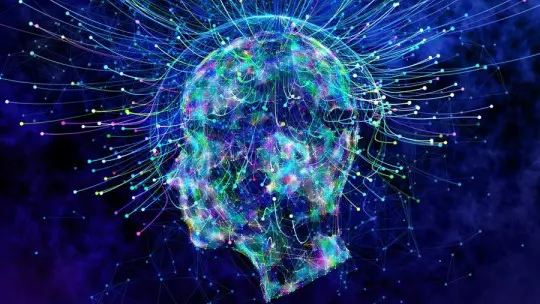Motivation is the force that drives people to carry out any type of activity or to start and maintain all the projects they propose. This motivation acts both at a professional or academic level, such as starting a competitive exam; as well as on a personal level, for example starting a weight loss diet.
To achieve these objectives, the person relies on a series of motivations that can be intrinsic or extrinsic. Throughout this article, we will explain what extrinsic motivation consists of, as well as the differences it maintains with intrinsic motivation and what stages the person goes through through this type of motivation.
Related article: “Types of motivation: the 8 motivational sources”
What is extrinsic motivation?
Extrinsic motivation refers to the type of motivation in which the reasons that lead a person to carry out a certain work or activity are located outside of it; or what is the same, they are subject to contingencies or external factors.
In this type of motivation, the incentives or reinforcements, both positive and negative, are external and are outside the person’s control. Therefore, extrinsic motivation is conceived as all those types of prizes or rewards that we obtain or are granted when performing a specific task or task.
The example of external motivation par excellence is the salary that a person receives in exchange for doing their job. Another example could be those rewards or prizes that parents give to their children in exchange for their achieving good academic performance.
Finally, another less material example consists of the praise and recognition that a person can receive after completing a task successfully.
However, in the majority of cases in which motivation is exclusively extrinsic, a decrease in performance ends up occurring regardless of the area referred to. Therefore, extrinsic motivation is not a good ally for long-term projects.
External rewards take a person away from the motivation that really matters: intrinsic motivation. It has been proven that when a person begins an activity or task motivated by internal factors and later external rewards are added, effectiveness and productivity decrease over time. The explanation is simple, something that is started for the mere pleasure of doing an activity ends up being perceived as an obligation and is not enjoyed in the same way.
However, this does not imply that all extrinsic motivation is harmful. The feeling after receiving a reward or prize for a job well done is always pleasant and pleasant, but this should not end up replacing the satisfaction or delight that the activity itself provides.
Differences between extrinsic and intrinsic motivation
As mentioned above, there is another type of motivation different from extrinsic motivation and it is that motivation that comes from within the person.
Both intrinsic and extrinsic motivation constitute two completely different forms of motivation, but they have in common that both can be presented in a positive or negative way and are capable of exerting both effects on the person’s performance.
The following explains what these types of positive and negative motivation consist of:
1. Positive motivation
In this type of motivation, the person initiates, directs and sustains his or her actions with the intention of achieving some type of reward. In extrinsic motivation it can be a financial reward or prize and in intrinsic motivation it can be self-gratification or satisfaction that the task itself brings to the individual. These rewards act as behavior reinforcers.
2. Negative motivation
In these cases, the person initiates or maintains a behavior or activity with the objective of avoiding or avoiding a consequence that they consider unpleasant. When this negative consequence comes from the outside, it may be an attempt to avoid some type of punishment, while when it comes from within, it is possible that what the person is trying to avoid is a feeling of frustration in the face of possible failure.
Regarding the main differences between extrinsic and intrinsic motivation, intrinsic motivation has its origin in the same person who carries out the activity and extrinsic motivation is incited by factors or agents external to it.
There are a series of factors that influence motivation, in the case of intrinsic motivation this is determined by internal agents such as interest, satisfaction, self-realization or internal needs. Furthermore, when motivation comes from within, the person is able to maintain that mood for longer, which is why this type of motivation is so important.
Meanwhile, in extrinsic motivation the person does expect some type of gratification, retribution or external recognition. Among the elements that give rise to this motivation are external pressure, the need for recognition or the need for social support.
Likewise, both forms of motivation can appear both together and independently and be used in any area in which the person has to carry out a behavior, task or activity with a specific purpose. Whether it is a productive goal (company production) or a personal goal (losing weight).
Phases of extrinsic motivation
According to a theory developed by researchers Deci and Ryan in 1985, There are a series of stages or stages through which the person can move from a phase in which motivation is purely external until a final stage in which he is able to integrate and assume the purpose of his activity as his own.
However, these stages are not all mandatory. That is, a person can start at stage 3 and evolve or remain in a single state constantly.
1. External motivation
In this first stage, motivation is completely determined by external factors. The person does not have any type of control over it and performs the task only due to external demand and waiting for gratification.
2. Introjected motivation
In this second case, the goal continues to be to meet a demand made from abroad However, the remuneration or satisfaction is internal. This motivation is related to self-esteem, to self-realization, but the person still does not have absolute control.
3. Motivation regulated by identification
In this third stage, the person maintains their behavior or performs the task for reasons external to them. However, it has even more autonomy and sufficiency to make decisions about the reward.
4. Motivation by integration
It is the last stage in which motivation is practically intrinsic. At this stage the person incorporates the purpose as their own. However, it cannot be categorized as intrinsic since the activity is not carried out for the mere satisfaction of doing it. Even so, compared to the rest of the stages, this is the one in which the person obtains the best performance.









